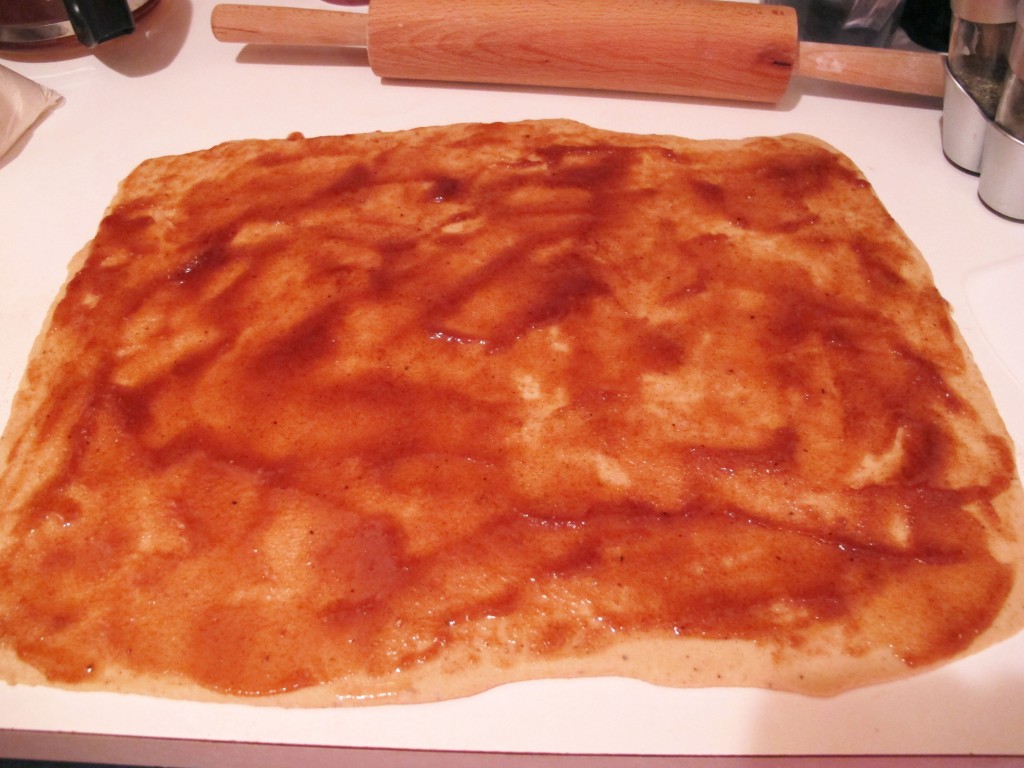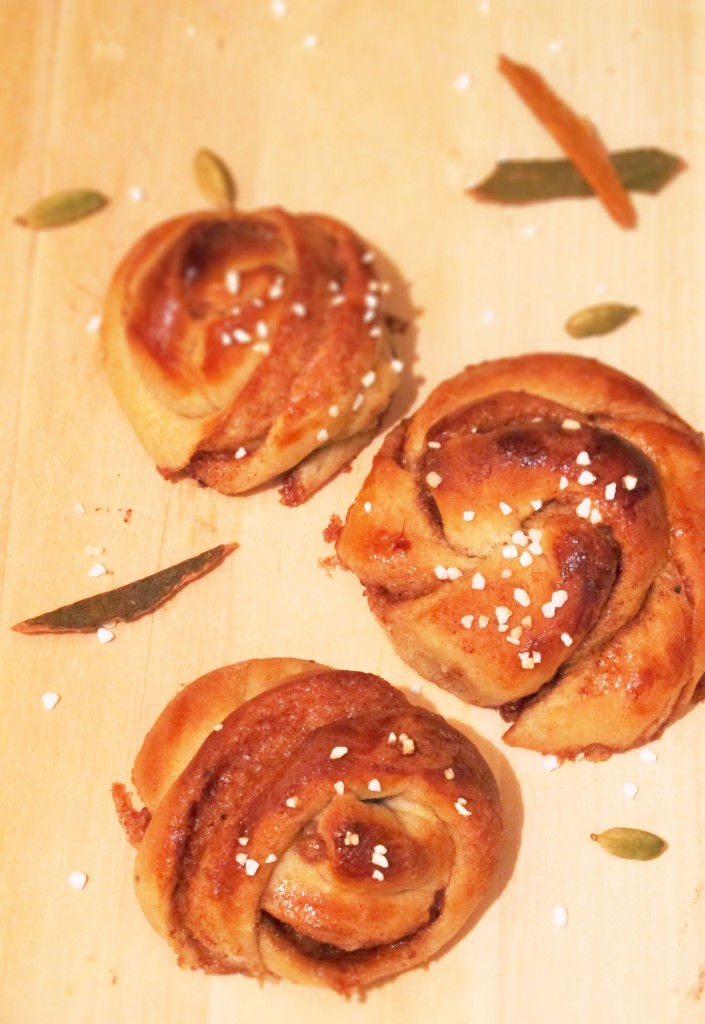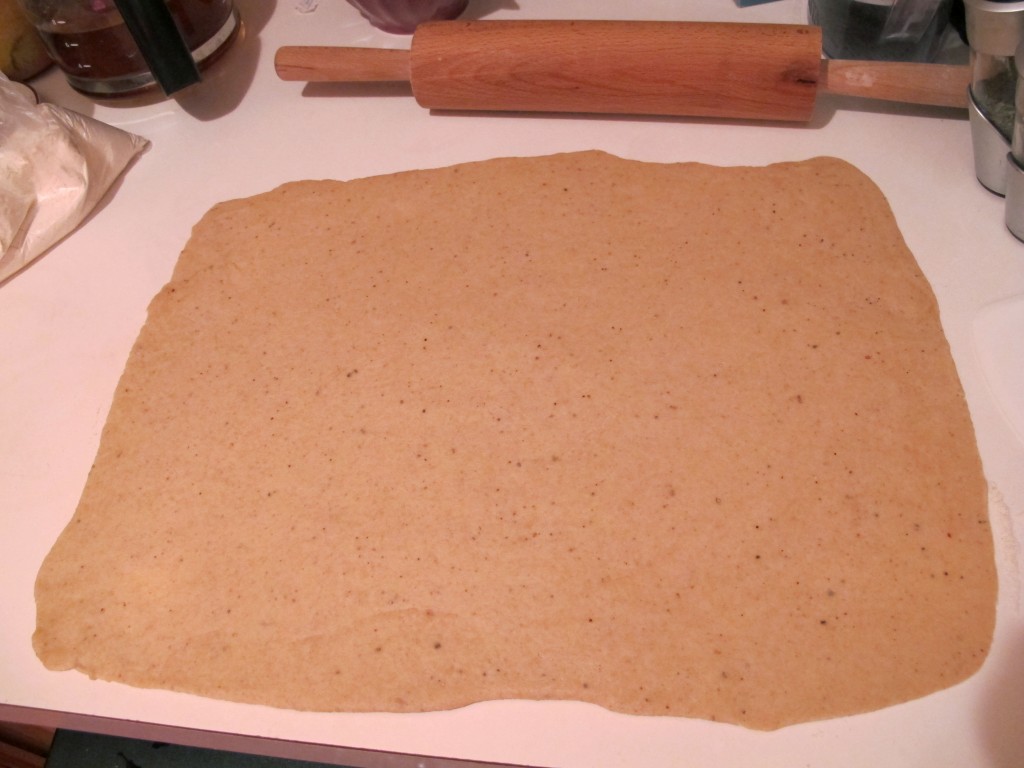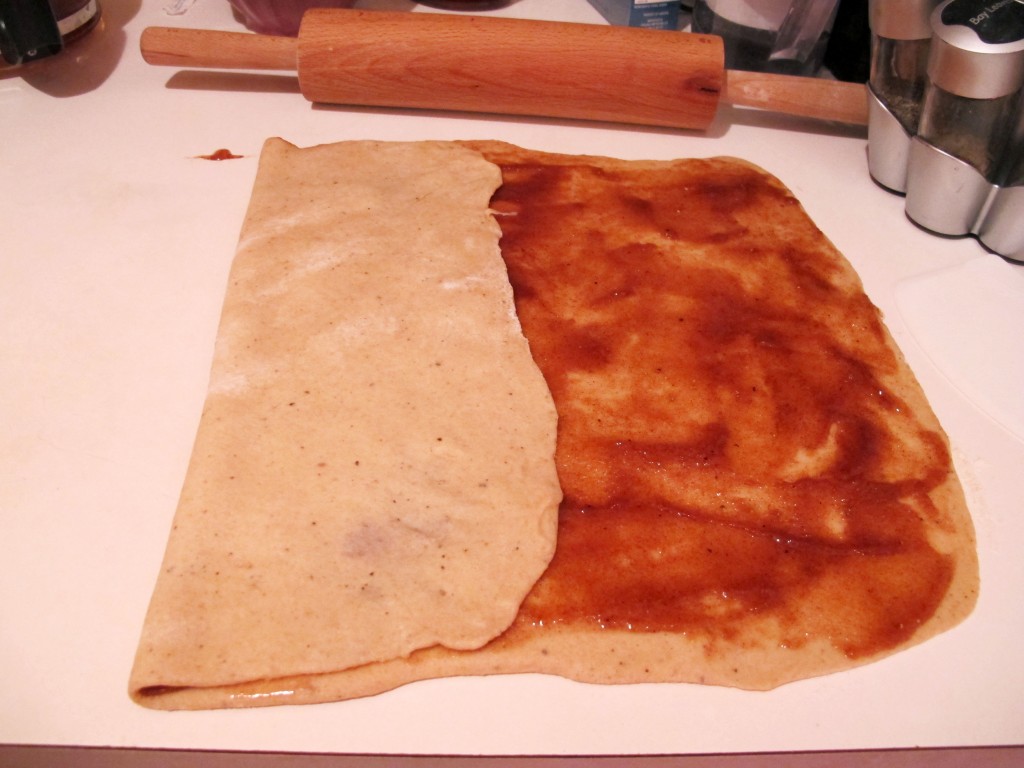While I was in Sweden, I fell in love with the cinnamon rolls that are ubiquitous in their bakeries and cafes. Buttery pinwheels laced with cinnamon and crunchy pearl sugar, and a hint of cardamom to add an exotic depth not seen in your monstrous American Cinnabon.
Unfortunately, when I looked at recipes for Swedish-style cinnamon rolls, many of them were for massive batches (30-40 rolls?!) or in uncomfortable European measurements (deciliters). Baking is already fraught with volume vs weight peril as is, and I was hesitant to follow any one recipe. So, as is usually the case in situations like this, I analyzed several recipes and came up with some averages in convenient quantities.
Essentially, you make a sweet bread dough with caradamom and let it rise for about 90 minutes. Then, lightly flour a clean counter and roll the dough out into a thin rectangle, about 15″ x 20″.

Cover the dough sheet with a layer of buttery and sugary goodness. This filling should be a little paste-like, not too runny.
Next, fold the dough like an envelope in even thirds.
Using a long knife, pizza wheel or dough scraper, cut long strips of dough about 1/2″ wide. I was able to get eight long strips, and then subsequently cut each strip in half to make smaller buns.
The tricky part is mastering how to twist the cinnamon rolls into knots. After doing some research (thank you, Youtube!), I discovered Martin Johansson, a popular home baker in Sweden who has published some books and has excellent videos demonstrating how to make cinnamon rolls.
Here’s the twist-and-spiral method:
[youtube=http://www.youtube.com/watch?v=qIxzZGGAPOU&w=560&h=315]
Here’s the slightly more complicated loop-around-the-finger-and-over-the-top method:
[youtube=http://www.youtube.com/watch?v=SDUPwKTEdlc&w=560&h=315]
I probably watched these videos a dozen times. Be gentle as you handle the dough, as it is quite stretchy and pliant.
When you have finished twisting your cinnamon rolls, lightly brush the tops with egg wash and give them a good sprinkle of Swedish pearl sugar (or another coarse white sugar). Into the oven they go!
The following recipe makes a manageable batch of 8 large cinnamon rolls or 16 mini-sized ones, which is what I prefer.
Continue reading Recipe: Swedish Cinnamon Rolls







